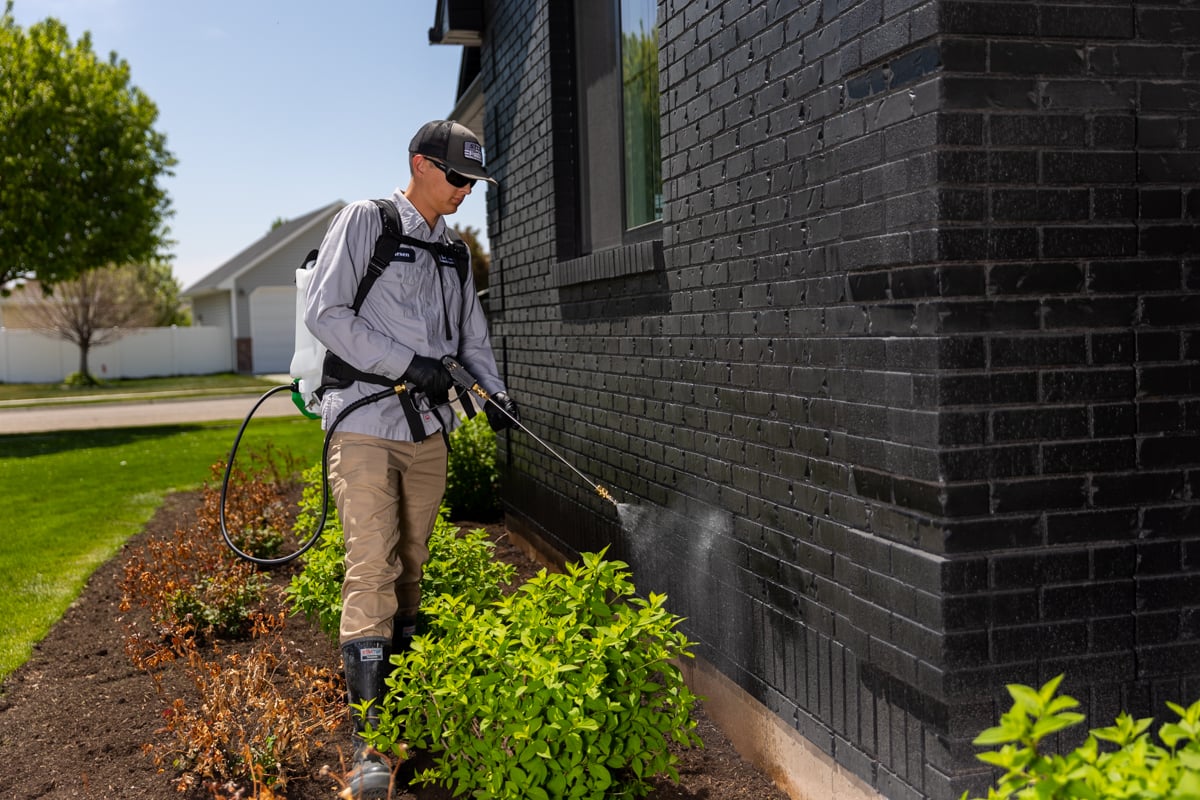Reputable A1 Bed Bug Exterminator Charlotte - Get Rid of Bed Bugs Rapid
Reputable A1 Bed Bug Exterminator Charlotte - Get Rid of Bed Bugs Rapid
Blog Article
Bed Pest Therapy Failure: Comparing Chemical Vs. Non-Chemical Solutions
In the world of insect control, specifically when dealing with the consistent problem of bed insects, the selection in between chemical and non-chemical therapy options can be an essential one. Both approaches use distinctive benefits and disadvantages, affecting factors such as effectiveness, safety considerations, and general expense. By taking a look at the nuanced information of each method, a more clear understanding of which course to seek in addressing a bed insect invasion can be achieved.
Efficiency of Chemical Therapies
Chemical therapies for bed pest problems have been widely recognized for their rapid and powerful efficacy in getting rid of these pests. When taking into consideration the performance of chemical therapies, it is crucial to recognize that they can give a extensive and quick option to a bed bug trouble.
Furthermore, chemical treatments have the benefit of offering recurring effects, implying that they can proceed to eliminate bed insects also after the preliminary application. This residual activity is particularly advantageous in combating any type of possible re-infestations. Additionally, the fast activity of chemical therapies can bring alleviation to individuals encountering severe bed pest problems, permitting them to reclaim control of their living spaces promptly.
Security Concerns With Chemical Solutions
When making use of chemical services for bed bug treatment is ensuring the safety and security of residents and the environment,One essential facet that calls for careful consideration. While chemical therapies can be reliable in eradicating bed insects, they might position threats if not handled effectively. Among the primary security issues with chemical remedies is the possible injury they can create to human health and wellness. Exposure to certain chemicals utilized in bed pest therapies can cause breathing issues, skin inflammation, or various other negative responses, especially in individuals with pre-existing conditions or sensitivities. Additionally, incorrect application or dose of chemical pesticides can result in harmful residues lingering in the cured location, posing lasting health and wellness threats to passengers.
In addition, the environmental effect of chemical solutions is one more considerable consideration. Some chemicals made use of in bed pest treatments might be unsafe to valuable insects, wildlife, and ecological communities if they seep into the soil or water supply. It is important to make use of chemical therapies deliberately, complying with safety and security guidelines, and taking into consideration less harmful choices to reduce these threats and make sure the secure and effective monitoring of bed insect problems.
Advantages of Non-Chemical Approaches
Thinking about the possible security concerns and environmental effect investigate this site associated with chemical solutions for look at this site bed insect treatment, discovering non-chemical strategies presents an appealing option with numerous distinctive advantages. Non-chemical techniques provide a more secure alternative for homes, particularly those with children, people, or animals conscious rough chemicals. These methods eliminate the dangers of exposure to harmful compounds, minimizing the capacity for negative health and wellness impacts. Moreover, non-chemical treatments are eco-friendly, as they do not contribute to air or water contamination, making them a lasting selection for pest control.
Furthermore, non-chemical remedies can be effective in targeting bed pests, including hard-to-reach areas where chemical treatments might not permeate - A1 pest control services charlotte. Methods such as warmth therapy, vacuuming, heavy steam cleaning, and bed mattress encasements offer thorough removal without the use of dangerous chemicals.
Limitations of Non-Chemical Treatments

In addition, non-chemical treatments usually require numerous applications to accomplish effective removal. This can be lengthy and might not constantly guarantee total removal of all Related Site bed bugs and their eggs, particularly in hard-to-reach or concealed locations.
Moreover, the success of non-chemical therapies greatly counts on proper execution and thoroughness, which can be challenging for individuals without specialist knowledge. Insufficient application of non-chemical techniques may result in insufficient eradication, causing consistent problems and the need for additional treatments.
As a result, while non-chemical treatments have their advantages, it is essential to recognize these restrictions and consider them when determining one of the most reliable technique for taking care of bed insect infestations.
Expense Contrast: Chemical Vs. Non-Chemical Options
Provided the constraints associated with non-chemical treatments, a necessary aspect to evaluate in the context of bed insect management is the expense contrast in between chemical and non-chemical choices. In comparison, non-chemical therapies like warm therapy or heavy steam can be extra pricey, with costs ranging from $1,000 to $6,000 for a whole home. While the initial price of chemical treatments may appear lower, several therapies may be needed to fully get rid of the invasion, potentially increasing the general expense.
Conclusion

Taking into consideration the prospective safety issues and ecological influence associated with chemical options for bed pest treatment, exploring non-chemical approaches presents an appealing alternative with a number of unique benefits.Provided the restrictions linked with non-chemical treatments, a necessary element to assess in the context of bed bug administration is the price contrast in between chemical and non-chemical options. In contrast, non-chemical therapies like warm treatment or vapor can be a lot more pricey, with expenses varying from $1,000 to $6,000 for a whole home. While the first cost of chemical treatments might seem lower, multiple therapies might be called for to fully remove the infestation, potentially enhancing the total expense.In verdict, when comparing chemical and non-chemical bed pest treatment alternatives, it is necessary to consider efficiency, security, benefits, limitations, and expense.
Report this page